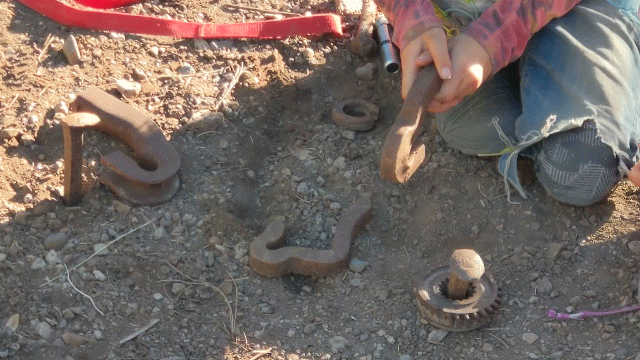Here’s another look at what happens with unschooling.
You set out to spend some time in nature. The eight year-old is starting an animal tracking class, so maybe you’ll commune with nature a bit while you’re out there.
Then, on the way, you see windmill blades, but not on a windmill. They’re. On. A. Train! In the middle of nowhere. Lots of them! They stretch off into the distance. Soooo many windmill blades!
And they’re on a siding! And there’s a little pull off to get over there!!! Woohoo!
So, now, you and the gang—9, 8, and 6 years-old—are going to explore windmill blades! That’ll be fun! You’ve never seen a blade up close before. This’ll be so much fun!
You and the kids head for the blades. They’re walking along the tracks, perusing them. You stop to admire the first blade. It’s gorgeous, framed up just so on the flatcar. There’s a couple of blocks of concrete on the other end of the car acting as a counterweight. Visible between the blade and flatcar, a snow capped mountain peaks into view,. You hear a clanking sound in the distance.
The kids spent maybe a minute looking at the windmill blades? They spent the rest of their time picking up so much stuff along the side of the track. By the time you get there, they've got stakes and a cranker and a flat metal plate and a hammer/bell and a screw and a lock washer and a nut, all covered in rust. They’re busy using the hammer to drive stakes into the dirt.
Oh well, they’re having a blast. You get to go back to reverentially studying the windmill blades, right there, in front of you, on the railroad car, just parked out here in the middle of nowhere! So cool!
A few days later, you all go on an explore again. Maybe this time, you’ll spend more time outdoors, maybe you won’t. Maybe you’ll get to see the blades again. On the way there though, you see something huge pulled off on the other side of the road. It’s three of the blades! They’re on trucks now. You stop, with the gang in the backseat to check it all out. They get carried horizontally on trucks, not vertically like they’re carried on trains. The truck driver gives you a bit of a puzzled look, then smiles. He sees the gang in the back. They, of course, aren’t nearly as interested in the windmill blades. It’s all good.
You’d planned, the gang had planned, on exploring next to the tracks again for more railroad tailings, but there’s a railroad truck cruising up and down the tracks this time. So, rather than searching for more railroad parts, the gang finally heads for the forest. To see nature. With their bag of railroad sundries they picked up five days before.



Comments
Post a Comment
Please leave your comments on this topic: